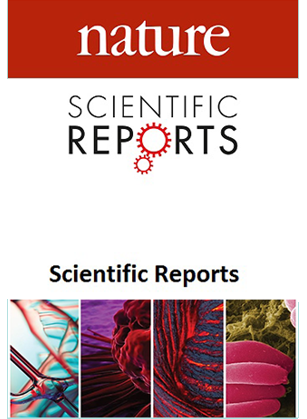IMRC-exo通过抑制尖锐蝮蛇咬伤中毒兔模型的铁下垂来减轻肢体损伤。
摘要
Deinagkistrodon acutus是东南亚特有的毒蛇之一。该物种所致肢体损伤是蛇咬伤患者致残的主要原因,其发病机制及干预策略有待进一步探讨。近年来,研究发现间充质干细胞衍生外泌体(mesenchymal stem cell-derived exosome, MSC-Exo)对减轻多种因素引起的肢体损伤具有积极的治疗作用,但这种作用在蛇咬伤所致肢体损伤中尚不清楚。免疫与基质调节细胞(IMRC)是一种源自人胚胎干细胞的间充质干细胞,具有独特的免疫调节和细胞外基质生成调节能力。本研究选择IMRC,研究其Exo对deinagistrodon acutus毒液致肢体损伤的影响及机制。将18只健康雄性大白兔按随机数字表法分为假药(S)组、蛇毒(SV)组和SV + IMRC-Exo组,每组6只。采用肢体注射1.5 mg/kg蛇毒建立兔蛇咬伤模型,2 h后静脉注射80 U/kg抗蛇毒血清。SV + IMRC-Exo组皮下注射7.5 × 1010粒Exo。造模后,定期测量大鼠肢体周长,检测血清肌酸激酶(CK)、肌红蛋白(Mb)等肌肉损伤标志物水平。实验结束时取损伤肢体肌肉组织标本,检测大体病理损伤及细胞凋亡情况。测定铁中毒相关产物包括铁沉积、活性氧(ROS)、丙二醛(MDA)、4-羟基壬烯醛(4- hne)、谷胱甘肽(GSH)、超氧化物歧化酶(SOD),测定关键蛋白包括酰基辅酶a合成酶长链家族成员4基因(ACSL4)、烟酰胺腺嘌呤二核苷酸磷酸氧化酶1 (NOX1)、环氧化酶2 (COX2)、谷胱甘肽过氧化物酶4 (GPX4)、铁蛋白重链1 (FTH1)。与S组比较,SV组及SV + IMRC-Exo组造模后大鼠肢围及CK、Mb水平均显著升高。然而,SV + IMRC-Exo组的肢体围度和肌肉损伤标志物水平明显低于SV组。组织病理学分析显示,与S组相比,SV组和SV + IMRC-Exo组小鼠有明显的肌肉组织损伤和细胞凋亡。然而,SV + IMRC-Exo组的这些病理变化明显轻于SV组。此外,与S组相比,SV和SV + imsrc - exo组肌肉组织中铁沉积、ROS、MDA、4-HNE水平及ACSL4、NOX1、COX2 mRNA表达量显著升高,GSH、SOD水平及GPX4、FTH1 mRNA表达量显著降低。然而,与SV组相比,IMRC-Exo的应用显著逆转了上述衰铁相关指标的变化。IMRC-Exo对尖锐蝮蛇毒液致兔肢体损伤具有保护作用,其机制可能与抑制铁下垂有关。



Deinagkistrodon acutus is one of the unique venomous snakes native to Southeast Asia. Limb injury caused by this species is the main cause of disability in snake bite patients, while the relevant pathogenesis mechanism and intervention strategies need to be further explored. In recent years, studies have established that mesenchymal stem cell-derived exosome (MSC-Exo) exerts a positive therapeutic effect on reducing limb injuries caused by a variety of factors, but this effect in limb injuries caused by snake bite is still unclear. Immunity-and-matrix regulatory cell (IMRC) is a type of mesenchymal stem cell derived from human embryonic stem cells, characterized by its unique capabilities in immune regulation and regulation of extracellular matrix production. In this study, IMRC was selected to investigate the effects and mechanisms of its Exo on limb injury induced by Deinagkistrodon acutus venom. Eighteen healthy male white rabbits were divided into Sham (S) group, Snake venom (SV) group and SV + IMRC-Exo group according to a random number table, with 6 rabbits in each group. Rabbit models of snakebite were established by limb injection of 1.5 mg/kg snake venom, followed by intravenous injection of 80 U/kg antivenom 2 h later. Additionally, subcutaneous injection of 7.5 × 1010 particles of Exo in the SV + IMRC-Exo group was given. After modeling, the limb circumference was measured regularly and the serum levels of muscle injury markers such as Creatine Kinase (CK) and Myoglobin (Mb) were detected. At the end of the experiment, muscle tissue samples of the injured limb were obtained to detect gross pathological damage and cell apoptosis. Ferroptosis-related products including iron deposition, reactive oxygen species(ROS), malondialdehyde (MDA), 4-hydroxynonenal (4-HNE), glutathione (GSH), and superoxide dismutase (SOD)were quantified, and key proteins including acyl-CoA synthetase long chain family member 4 gene (ACSL4), nicotinamide adenine dinucleotide phosphate oxidase 1 (NOX1), cyclooxygenase-2 (COX2), glutathione peroxidase 4 (GPX4), and ferritin heavy chain 1 (FTH1) were measured. Compared with group S, the limb circumference and CK and Mb levels were significantly increased after modeling in the SV group and the SV + IMRC-Exo groups. However, the limb circumference and levels of muscle injury markers were significantly lower in the SV + IMRC-Exo group than in the SV group. Histopathological analysis showed that those animals in the SV and SV + IMRC-Exo groups had obvious muscle tissue damage and apoptosis compared with the S group. However, these pathological changes were significantly milder in the SV + IMRC-Exo group than in the SV group. In addition, compared with group S, the levels of iron deposition, ROS, MDA and 4-HNE, and the mRNA expression of ACSL4, NOX1 and COX2 in muscle tissues in the SV and SV + IMRC-Exo groups were significantly increased while the levels of GSH and SOD, and the mRNA expression of GPX4 and FTH1 were significantly decreased. However, compared with the SV group, the application of IMRC-Exo significantly reversed the changes in ferroptosis-related indices mentioned above. IMRC-Exo has a protective effect on limb injury induced by Deinagkistrodon acutus venom in rabbits, in which the mechanism is potentially related to the inhibition of ferroptosis.

 求助内容:
求助内容: 应助结果提醒方式:
应助结果提醒方式:


